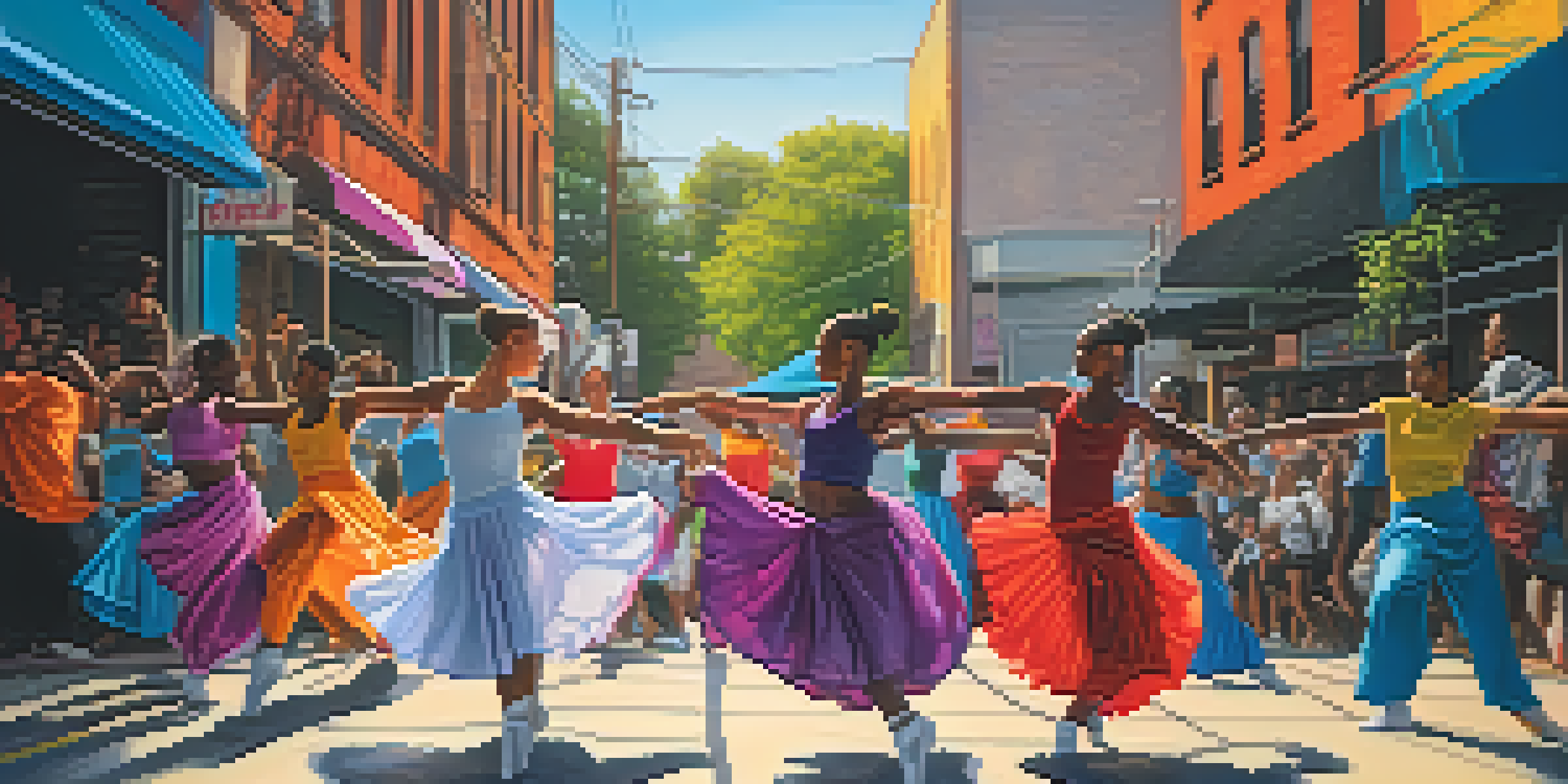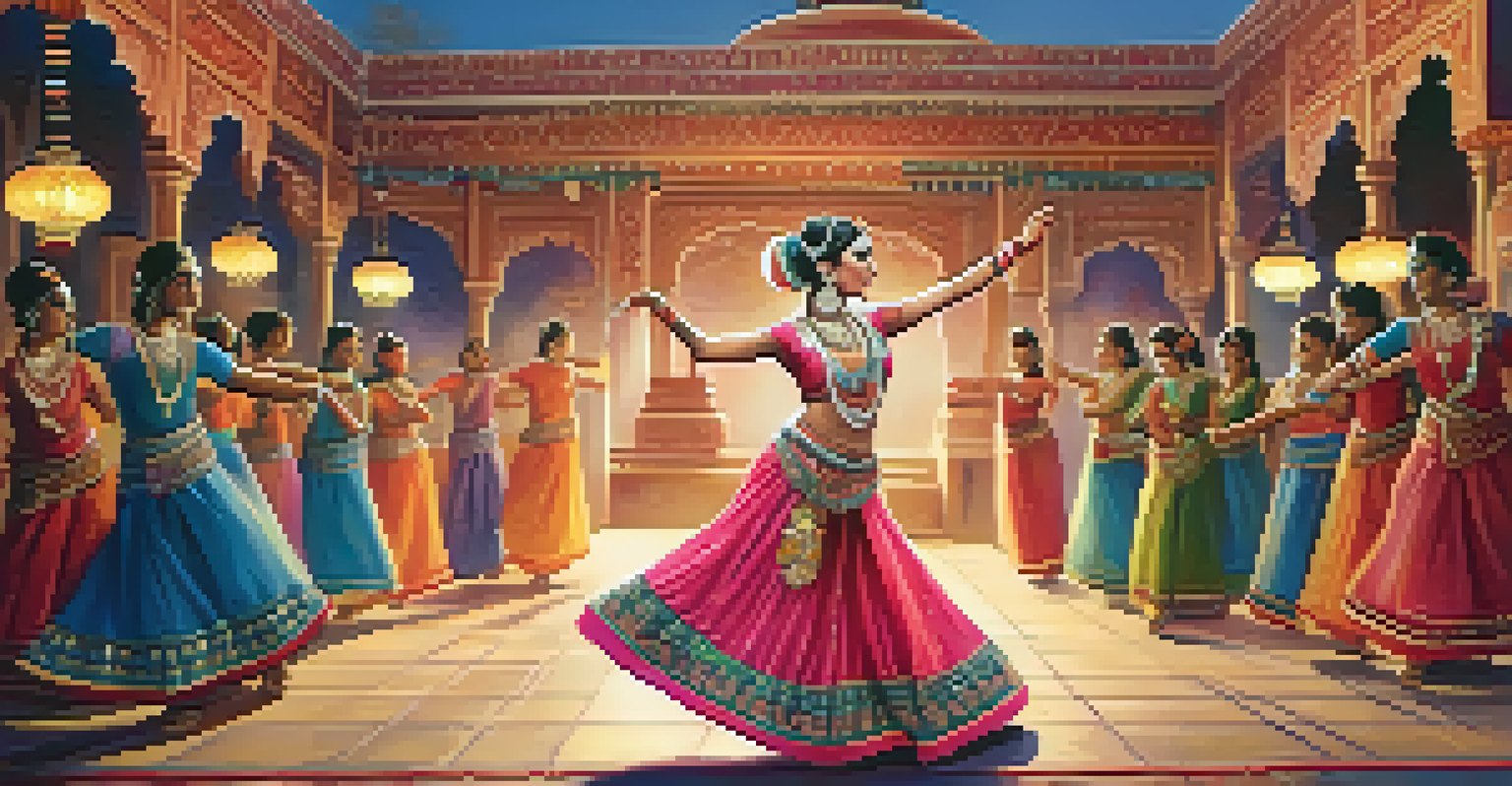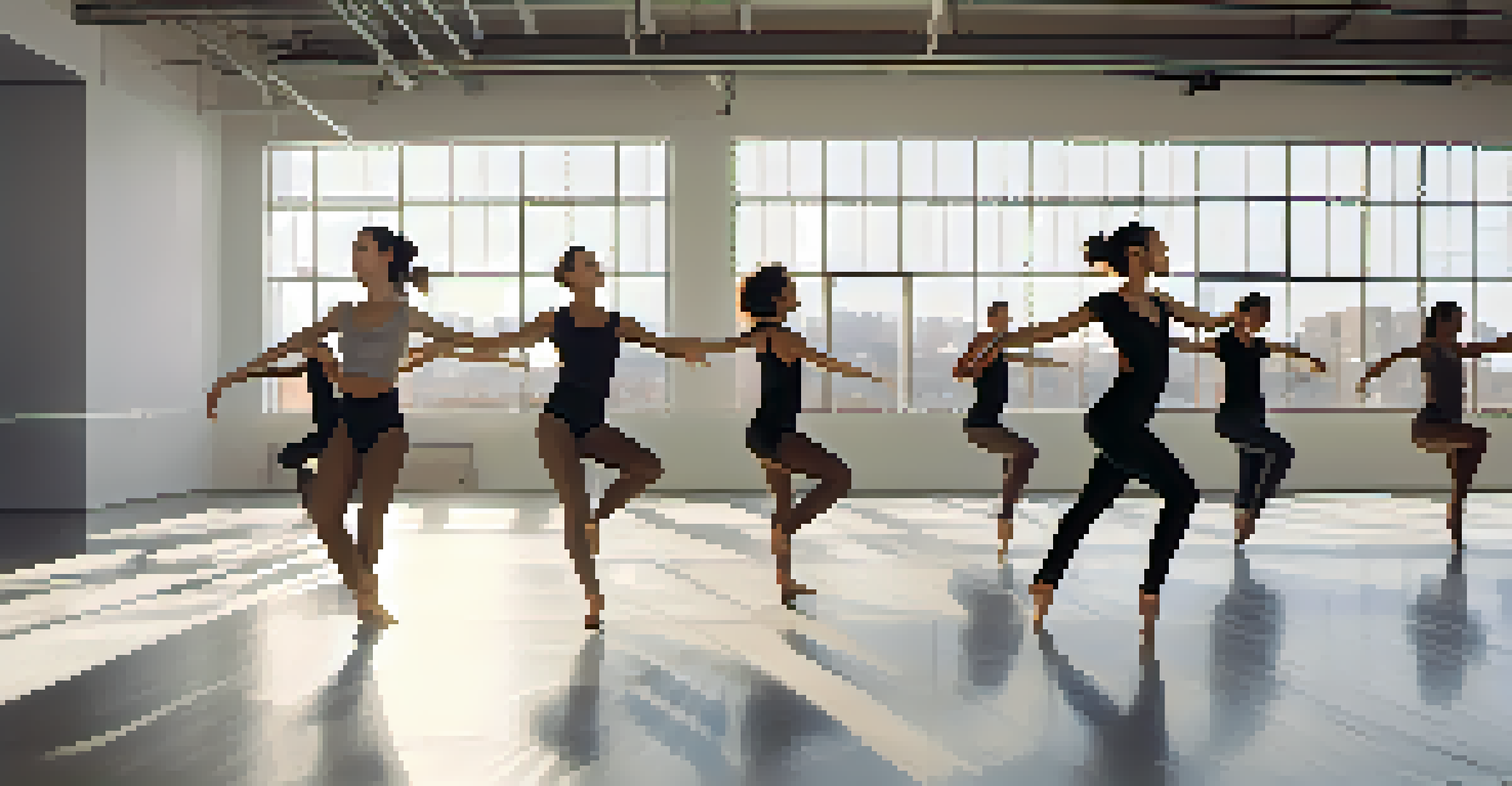Cultural Context in Choreography: A Deep Dive into Influences

Understanding Cultural Context in Dance
Cultural context in choreography refers to the social and historical backdrop that informs dance movements and styles. Every dance form is a reflection of its origins, influenced by the traditions, values, and experiences of a particular community. This context not only shapes the aesthetics of the dance but also its purpose and meaning within that culture.
Dance is the hidden language of the soul.
For instance, traditional African dance is deeply rooted in community rituals and storytelling, showcasing the importance of social connections. In contrast, ballet, which originated in the royal courts of Europe, often emphasizes technique and formality, reflecting the societal values of its time. Understanding these nuances helps us appreciate the rich tapestry of dance as an art form.
Ultimately, recognizing the cultural context allows choreographers to incorporate authentic elements into their work, fostering greater connection with audiences. It invites dancers to explore their own cultural narratives, enriching the dance landscape with diverse perspectives.
Historical Influences on Dance Styles
The evolution of dance styles is often tied to significant historical events and movements. For example, the Harlem Renaissance in the 1920s saw a surge in African American cultural expression, leading to the development of jazz dance. This vibrant form was a response to the social changes of the time, blending African rhythms with European influences.

Similarly, the emergence of hip-hop in the late 20th century was a direct reflection of urban culture and the struggles of marginalized communities. It served as a platform for self-expression and social commentary, showcasing how dance can be both a personal and political statement. Choreographers often draw from these historical narratives to create works that resonate with contemporary issues.
Cultural Context Shapes Dance Meaning
Understanding the cultural context of dance enhances appreciation for its origins, purpose, and the stories it tells.
Understanding these historical contexts provides dancers and choreographers with a deeper sense of purpose and direction in their creative processes. It encourages a dialogue between tradition and innovation, ensuring that dance remains a dynamic and evolving art form.
Regional Variations in Dance and Choreography
Dance varies greatly from one region to another, influenced by local customs, climates, and even geography. For example, the flamenco of Spain, characterized by its passionate movements and intricate footwork, reflects the country’s rich cultural heritage and diverse influences from the Moors and gypsies. Each region’s unique story is told through its dance, making it a vital form of cultural expression.
Dancing is creating a sculpture that is visible only for a moment.
In contrast, traditional Indian dance forms, such as Bharatanatyam or Kathak, incorporate intricate storytelling and spiritual themes, often tied to religious practices. These dances have evolved over centuries, preserving the cultural essence while allowing for modern interpretations. The distinctiveness of regional styles adds depth and variety to the global dance scene.
Choreographers who embrace these regional variations can create works that resonate on a personal level with audiences. By blending different styles and influences, they not only celebrate diversity but also foster a deeper appreciation for the interconnectedness of cultures.
The Role of Folklore and Mythology in Choreography
Folklore and mythology play a crucial role in shaping dance narratives and choreography across cultures. Many traditional dances are based on stories that have been passed down through generations, reflecting the values and beliefs of a community. For instance, Native American dance often incorporates rituals and stories that honor nature and ancestral spirits, creating a sacred connection between the performers and their heritage.
Similarly, the rich tapestry of Greek mythology has inspired countless ballet pieces, where stories of gods and heroes are brought to life through movement. Choreographers often draw upon these narratives to explore universal themes such as love, conflict, and transformation, making them relevant to modern audiences. This connection to folklore adds layers of meaning to the performance.
Historical Events Influence Dance Styles
Significant historical movements, like the Harlem Renaissance, have led to the evolution of dance styles that reflect societal changes.
By integrating folklore and mythology into choreography, artists can evoke emotions and provoke thought, enriching the audience's experience. It serves as a reminder of the power of storytelling in dance, allowing cultures to celebrate their histories while engaging the present.
Contemporary Issues in Dance and Choreography
In today's rapidly changing world, contemporary issues have become a focal point in dance and choreography. Topics such as social justice, identity, and climate change are being explored through movement, pushing the boundaries of traditional dance forms. Many choreographers are using their platforms to address these pressing issues, creating awareness and inspiring action.
For example, works that tackle themes of racial inequality often draw from the personal experiences of dancers, making the performances deeply impactful. Creating choreography that reflects societal challenges not only connects with audiences but also encourages dialogue and reflection. This relevance to current events helps dance maintain its place as a powerful medium for communication.
Moreover, the integration of technology in dance has opened new avenues for expression and creativity. From virtual reality performances to digital collaborations, contemporary dance is evolving in ways that challenge and redefine the art form. This adaptability ensures that choreography remains a vibrant and dynamic reflection of our world.
The Influence of Globalization on Dance Forms
Globalization has significantly impacted dance by facilitating the exchange of styles and cultural influences. As dancers and choreographers travel and collaborate across borders, they bring their unique experiences and perspectives to their art. This cross-pollination has led to the emergence of hybrid dance forms that blend elements from various traditions.
For instance, the fusion of street dance and classical ballet has given rise to innovative performances that challenge traditional norms. These hybrid styles not only showcase the versatility of dance but also reflect the interconnectedness of our global society. Choreographers who embrace this influence can create works that resonate with diverse audiences, celebrating the richness of cultural exchange.
Globalization Fosters Dance Fusion
Globalization has enabled the blending of diverse dance forms, creating innovative styles while emphasizing the importance of cultural sensitivity.
However, it's essential to approach this blending with cultural sensitivity and respect. Acknowledging the origins of different dance forms and honoring their significance ensures that the art remains authentic and meaningful. As globalization continues to shape choreography, it's crucial for artists to remain mindful of the cultural contexts from which they draw inspiration.
The Future of Choreography in a Cultural Context
As we look to the future, the cultural context of choreography will likely evolve alongside societal changes. With advancements in technology and shifting cultural dynamics, choreographers will have new opportunities to explore and express their ideas. This adaptability will be key in addressing emerging themes and narratives that resonate with future audiences.
Moreover, as the world becomes more interconnected, we can anticipate a greater blending of styles and traditions. This fusion will not only enrich the dance landscape but also foster a deeper appreciation for the diverse cultural narratives that shape our global society. The future of choreography will be about celebrating these differences while finding common ground.

Ultimately, the cultural context in choreography serves as both a foundation and a springboard for creativity. By remaining attuned to cultural influences and contemporary issues, choreographers can continue to create work that is both relevant and impactful, ensuring that dance remains a vital form of expression for generations to come.